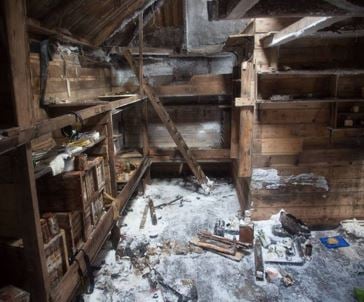Mawson’s Hut, in the far eastern sector of the Australian Antarctic Territory, has many 100-year-old artefacts, say heritage experts as they cut away at ice and snow from the building erected by the Australasian Antarctic Expedition (AAE) of 1911-1914, which was led by geologist and explorer Sir Douglas Mawson (1882-1958).
There are several huts in the area, collectively known as Mawson’s Huts (plural), located at Cape Denison, Commonwealth Bay, about 3,000 km (1,864 m) south of Hobart.
The huts are rare because they are one of just six surviving sites from the Heroic Era of Antarctic exploration – an era spanning from the end of the 19th century to 1917.
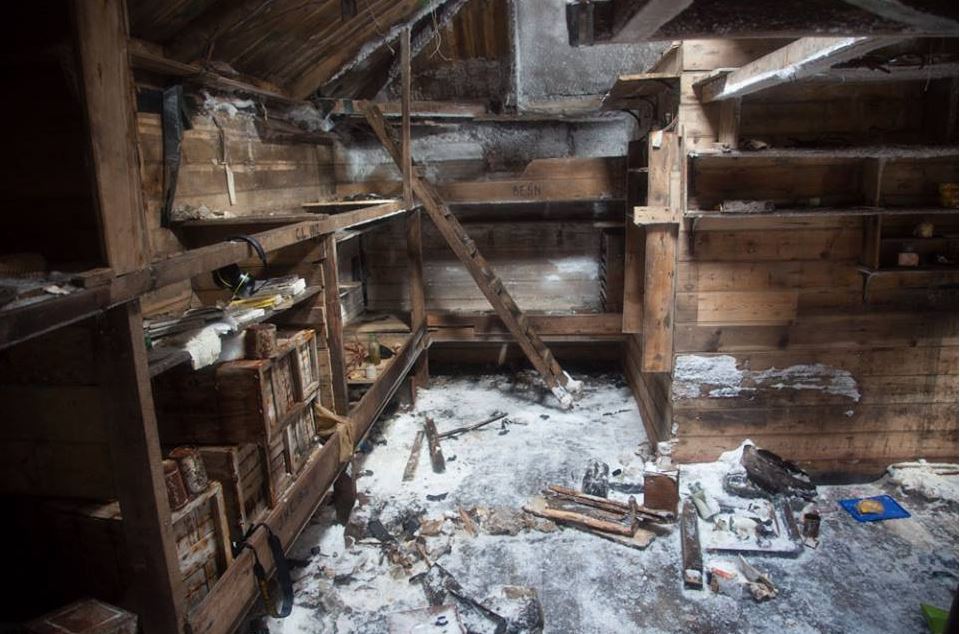 The Mawson’s Huts Foundation posted this picture in Facebook, and wrote “Ice removal going well inside the living section.” (Image: facebook.com/MawsonsHutsFoundation)
The Mawson’s Huts Foundation posted this picture in Facebook, and wrote “Ice removal going well inside the living section.” (Image: facebook.com/MawsonsHutsFoundation)
The Australasian Antarctic Expedition was the only expedition at the time that was organised, staffed and supported almost entirely by Australians.
Mawson’s Hut was the explorers’ living quarters
The most important building at Mawson’s Huts is Mawson’s Hut (singular), which was the winter living quarters.
The pyramid-roofed building was home to eighteen explorers in 1912, and the seven, including Sir Douglas, who stayed for an unplanned second year.
The hut has two sections – the workshop and living quarters. They had been prefabricated in Australia, shipped over, and erected by the explorers.
Among the artefacts recovered at the site is a wool balaclava, say experts who are working hard to conserve the home of the heroic explorers.
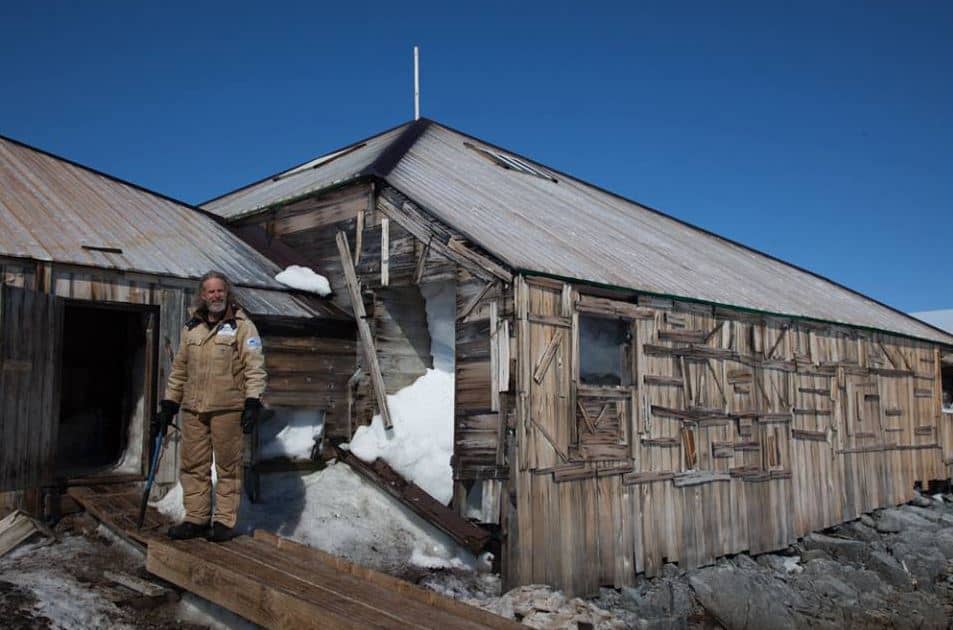 Conservator Dr. Ian Godfrey outside Mawson’s Hut. (Image: facebook.com/MawsonsHutsFoundation)
Conservator Dr. Ian Godfrey outside Mawson’s Hut. (Image: facebook.com/MawsonsHutsFoundation)
Team aims to restore hut to its former glory
Marty Passingham, expedition field leader, says their aim is to restore the hut to the state it was in in 1914, when Sir Douglas left.
The Guardian quoted Mr. Passingham, who said:
“We’ve made a promising start and we’re hoping we will have a large amount of the ice and snow removed and artefacts exposed by the end of the expedition in three weeks’ time.”
Sir Douglas is best remembered for his 100-mile long trek, alone, across the polar ice cap after two companions had died. When he got back to Cape Denison, his ship – the Aurora – had already sailed for Australia, so he had to stay in Antarctica for another year.
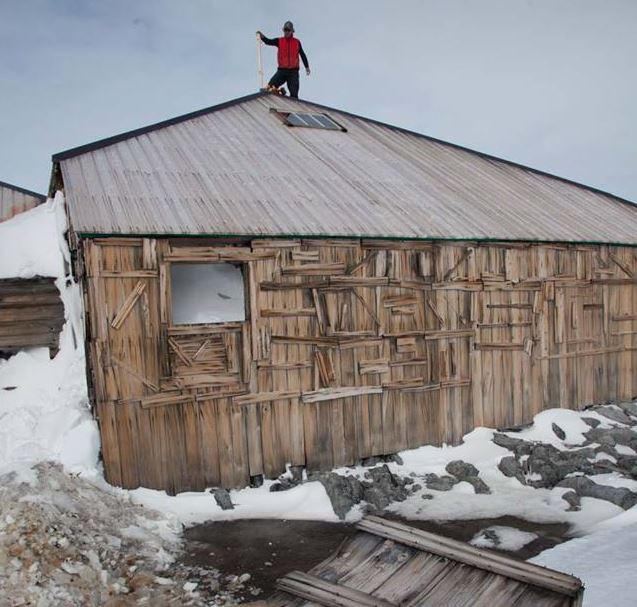 Marty Passingham working on the roof of Mawson’s Hut on a still day. (Image: facebook.com/MawsonsHutsFoundation)
Marty Passingham working on the roof of Mawson’s Hut on a still day. (Image: facebook.com/MawsonsHutsFoundation)
Ian Godfrey, the Foundation’s head conservator, said they uncovered several personal items and supplies used by the AAE, including a broom, boots, boxes and cans (apart from the balaclava).
Regarding the balaclava, Dr. Godfrey said:
“For me that was a highlight because it was the classic Mawson-style wool balaclava and it was in great condition.”
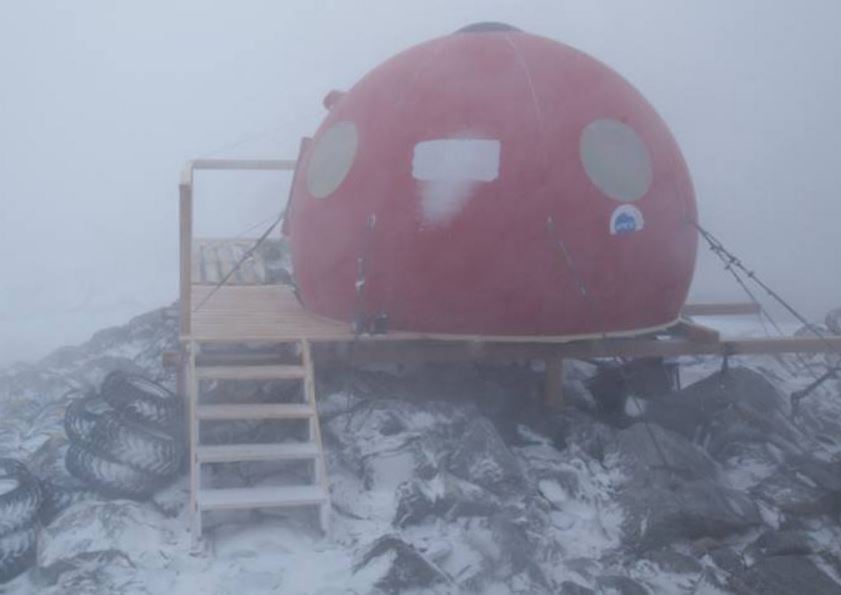 Blizzards have halted work at the site three times. When the weather is really bad, team members have to stay inside their base camp near the hut and wait. (Image: facebook.com/MawsonsHutsFoundation)
Blizzards have halted work at the site three times. When the weather is really bad, team members have to stay inside their base camp near the hut and wait. (Image: facebook.com/MawsonsHutsFoundation)
Mr. Pssingham said:
“We prepare by making sure everything is tied down in preparation and we have enough food, fuel and gas supplies close at hand to ride it out for a couple of days.”
Video – Sir Douglas Mawson’s lone trek across Antarctic ice
This National Geographic video talks about Sir Douglas Mawson’s lone 95-mile trek across Antarctic ice battling hunger, deadly crevasses and dire circumstances.

